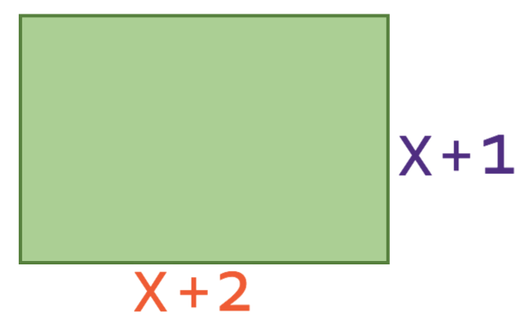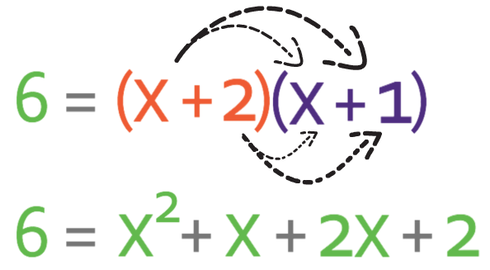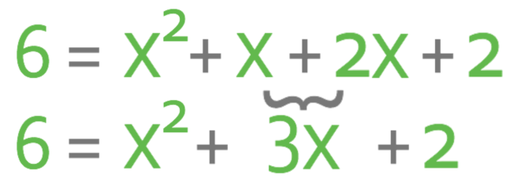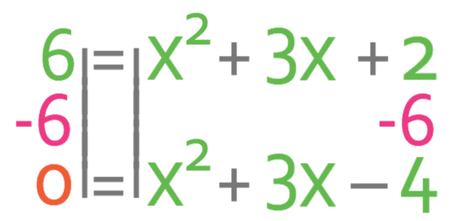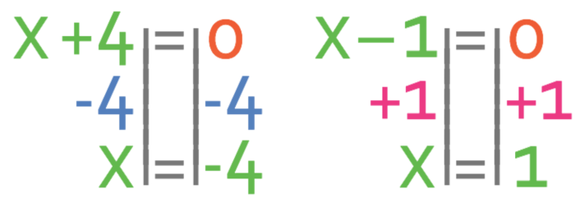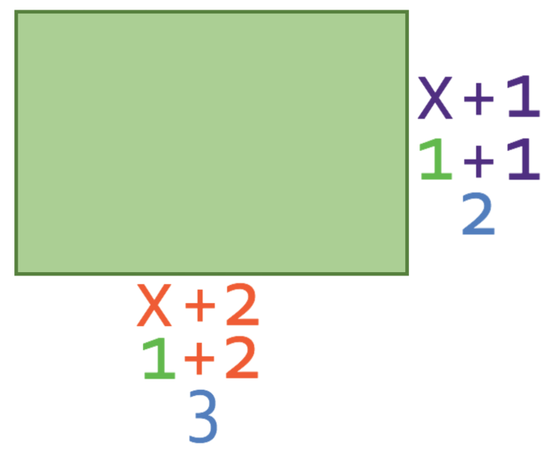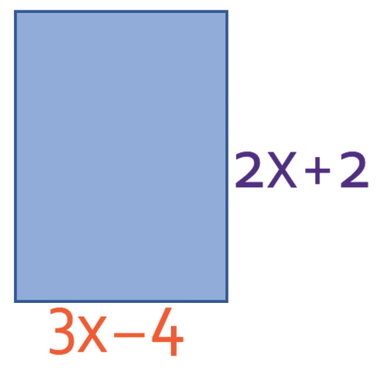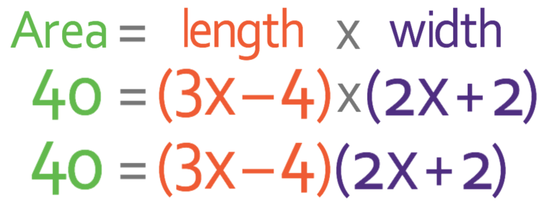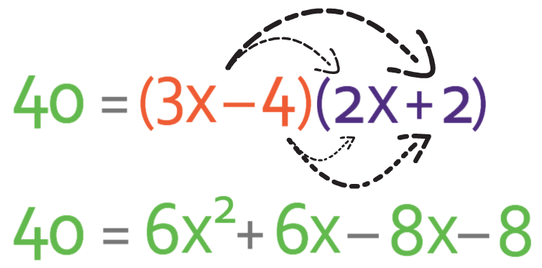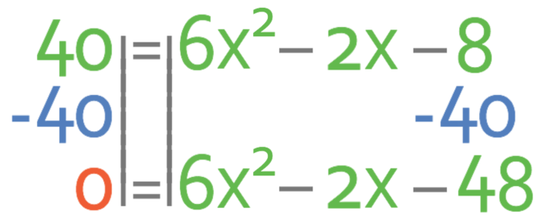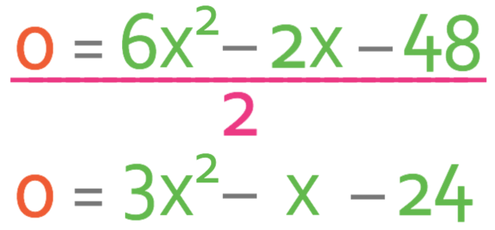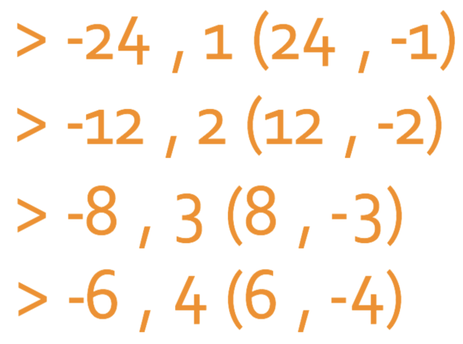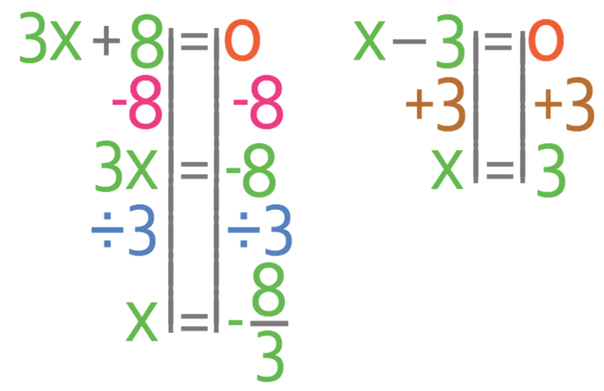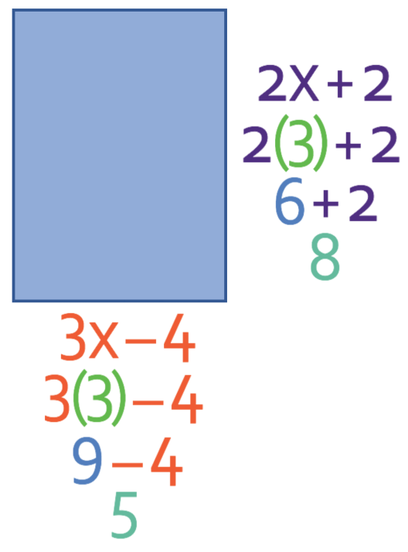4.5 F) Area of Rectangles – Part 3
The rectangle below has an area of 6 square units. Find the value of x.
We want to solve to find the value of x and we do this by getting all of the terms to one side of the equation and having the other side of the equation as 0. It is best to have a positive number of x2 terms. Therefore, I am going to get all of the terms on the right side of the equation and I will have the left side of the equation as 0. This means that I need to move the 6 that is currently on the left side to the right. I am able to move the 6 from the left to the right by doing the opposite; I take 6 from both sides of the equation.
The next step is to solve the quadratic equation, which we do by factorising. Our quadratic equation is in the form of ax2 + bx + c, where the value of a is 1, b is 3 and c is -4. As the value for a is 1, we are looking for two terms that multiply together to give -4 (the value of c) and add together to give 3 (the value of b). The two numbers that we are looking for are 4 and -1. Therefore, the factorised equation becomes.
This means that the length of the rectangle is 3 and the width is 2. When we multiply these together to find the area, we get 6, thus showing that we have found the correct value for x; x is 1.
The area of the shape below is 40 units squared. What is the value of x and what are the length and width of the rectangle below?
There are a few different methods that you can use to factorise this equation. I think the best method is write out the pair of numbers that give you -24, which are:
We want to get 3x2 when we multiply the first term in each of the brackets together. As 3 is prime, the only way that we are able to obtain 3x2 from two terms that contain x is to have 3x in one bracket and x in the other bracket. This means that the brackets start off like:
The value for x must be 3 and this is because if the values of x was -8/3, the length of the rectangle would be negative and we know that we cannot have a negative length (3 x (-8/3) – 4 = -8 – 4 = -12; we cannot have a length of -12). Therefore, x must equal 3.
The final part of the questions asks us to find the length and the width of the rectangle. We can do this by subbing the value for x into the expressions for the length and the width. The working is shown below:

